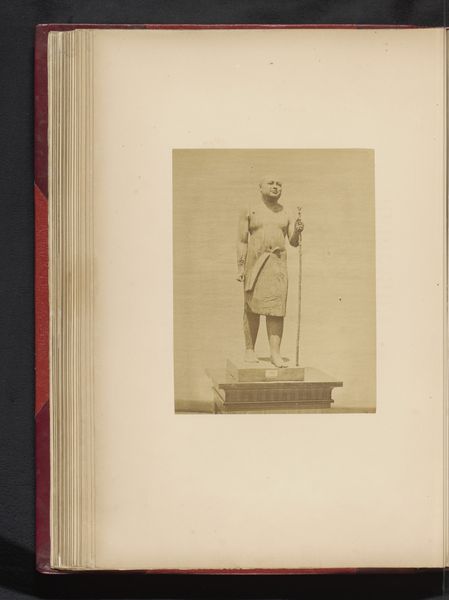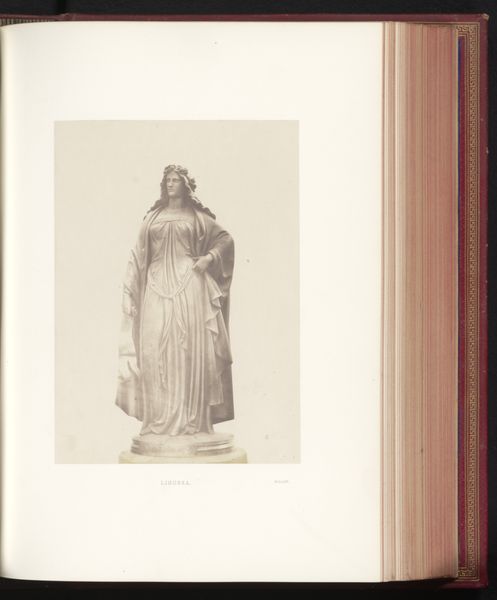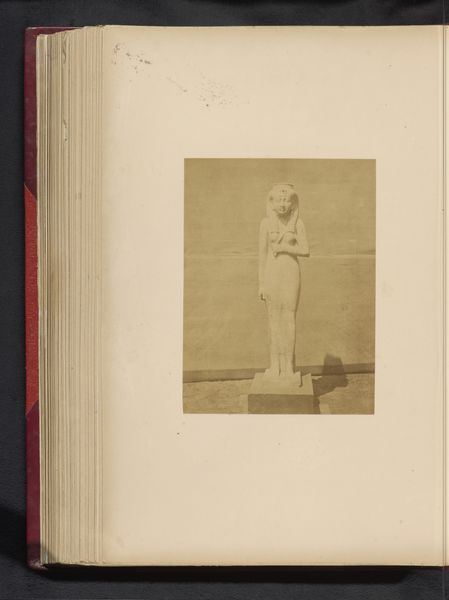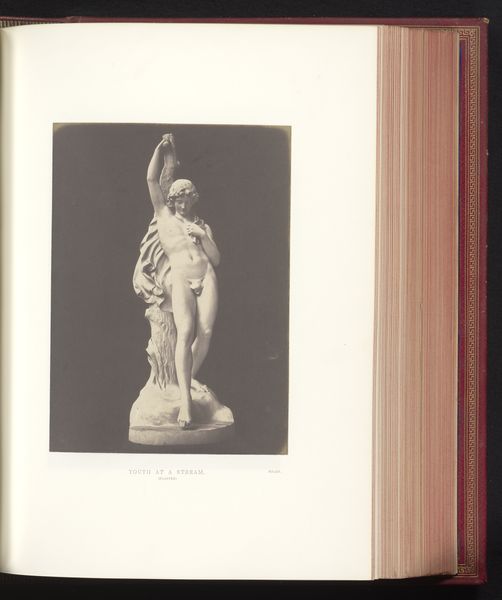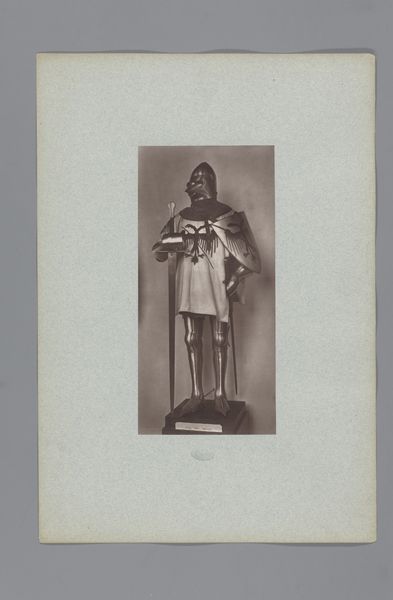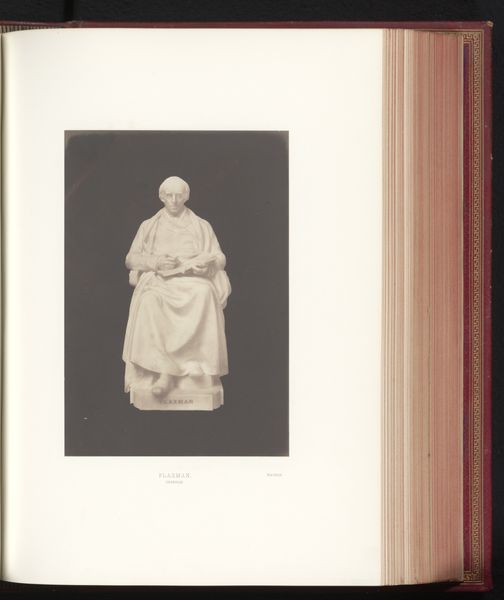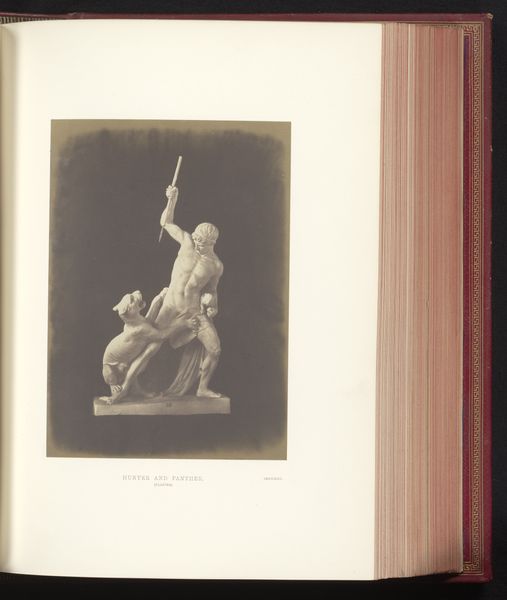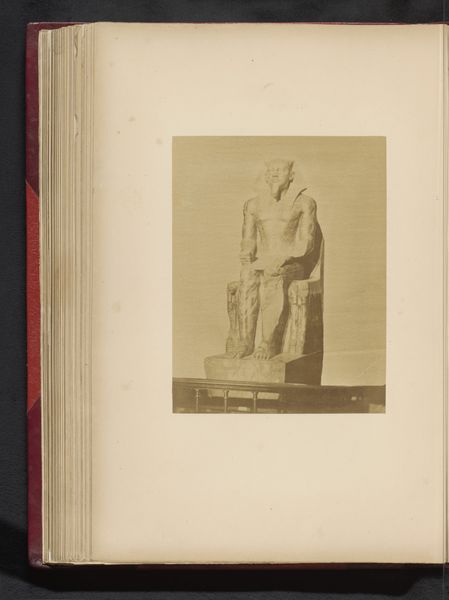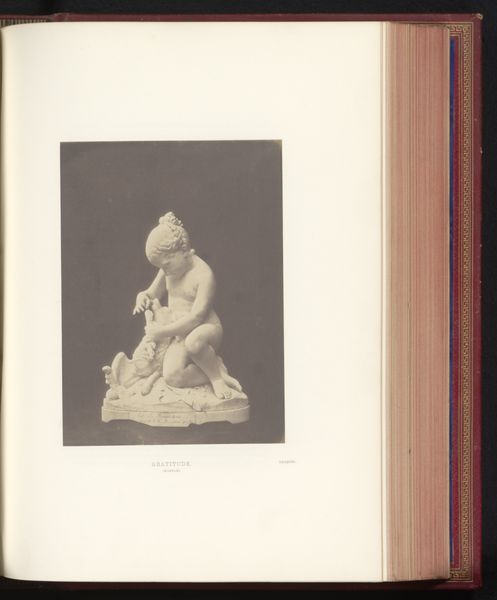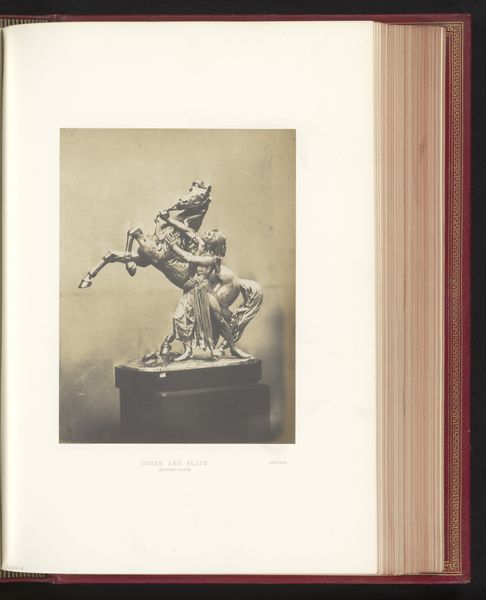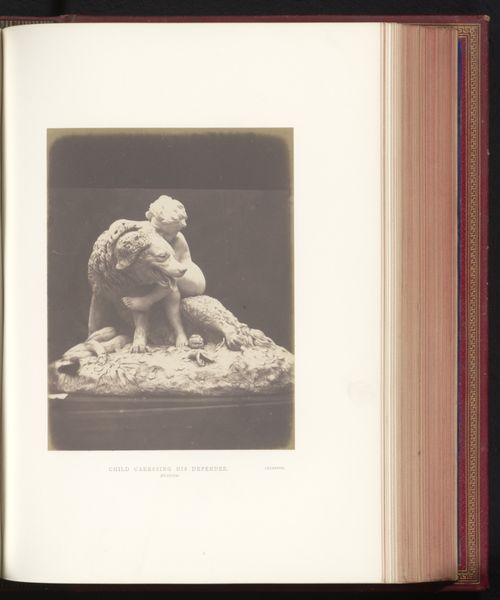
Standbeeld door John Henry Foley, voorstellend John Hampden, tentoongesteld op de Great Exhibition of the Works of Industry of All Nations van 1851 in Londen 1851
0:00
0:00
metal, bronze, sculpture
#
portrait
#
statue
#
metal
#
classical-realism
#
bronze
#
sculpture
#
history-painting
Dimensions: height 225 mm, width 156 mm
Copyright: Rijks Museum: Open Domain
This is a photograph by Hugh Owen of John Henry Foley’s statue depicting John Hampden, displayed at the Great Exhibition of 1851 in London. Hampden was a celebrated English politician who resisted the arbitrary taxation of Charles I and was seen as a martyr for liberty. The statue encapsulates Victorian ideals of heroism and moral fortitude. But it also evokes the complex relationship between power, representation, and historical narrative. The Great Exhibition itself was a celebration of industrial progress and imperial power, showcasing Britain's global reach. Consider the emotional impact of such statues on the Victorian public. For some, it might have inspired a sense of national pride and historical continuity. For others, perhaps those marginalized by the very systems of power that Hampden supposedly resisted, the statue may have been a stark reminder of exclusion and inequality. How do we reconcile the heroic narratives of the past with the injustices of the present?
Comments
No comments
Be the first to comment and join the conversation on the ultimate creative platform.


